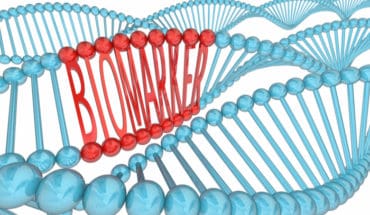When I watch a TV programme like CSI or Killed, featuring fictional forensic investigators, I am always surprised by how quickly they get crystal clear results pointing the finger straight at the culprit with a high degree of certainty. That’s also the impression you get if you read the popular press – DNA profiling will inevitably get the villain, whether he or she committed the crime recently or decades ago.
In reality, forensic genetics has been hugely important in helping police investigations, particularly into so-called ‘Cold cases’ where there is no other way to bring a criminal to justice. But the science is not so black and white as we have been led to believe. Instead, DNA profiling offers insights which are ‘shades of grey’ and need to be carefully evaluated in context.
There have been miscarriages of justice when DNA from sputum was wrongly interpreted as DNA from sperm
Yes, you may find someone’s DNA at the scene, but from what kind of cells? Sperm, sputum or skin? It is often impossible to tell but it can make all the difference. Skin cells, as we know, are shed constantly by an individual and can be spread widely by contact. Contamination of a scene is a very real possibility. There have been miscarriages of justice when DNA from sputum was wrongly interpreted as DNA from sperm, suggesting a rape that never took place.
Could someone have been in a location for a completely harmless reason? Could there have been poor control of a scene allowing samples to be contaminated?
And there is a wide misunderstanding of what DNA profiling can actually tell us. At the moment, we simply don’t have the knowledge to be able to predict what someone’s face looks like from a sample of their DNA – but this has been claimed.
Yes, we can get a good idea of the colour of someone’s eyes, hair colour (correct in around 70-90% of samples), and their continental ancestry, (correct in around 99 per cent of samples) but we can’t yet say if they have a long or oval face, a protruding chin or bushy eyebrows. These features are governed by 1000s of genes interacting together. And in all cases, there is always a margin of error. I think we will be able to make close estimations about face shapes and complex features in five to ten years time, but only after we have done a great deal more research and data analysis.
We asked Sense about Science to publish a guide into forensic genetics was because we felt that fiction was beginning to influence reality
The reason that we asked Sense about Science to publish a guide into forensic genetics was because we felt that fiction was beginning to influence reality. It is important that members of the public, the judiciary, police, academics and politicians really understand the scope, and limitations, of this new science. DNA profiling can give you a strong indication of guilt or innocence but should always be backed up by corroborative evidence. For example, if blood stains are found on a broken window after a suspect has fled, then this is strong evidence. But, minute quantities of DNA on the seat of a getaway car? Quite another thing altogether.
The Guide is for everyone and gives examples of miscarriages of justice which have occurred because people took some things for granted which just weren’t true. We aim to ensure that forensic genetics remains a powerful tool in a toolbox, not a sole arbiter in cases where so much is a stake.
Find out more from Sense about Science here.
- DNA profiling: Guiding the way - 5th February 2017







